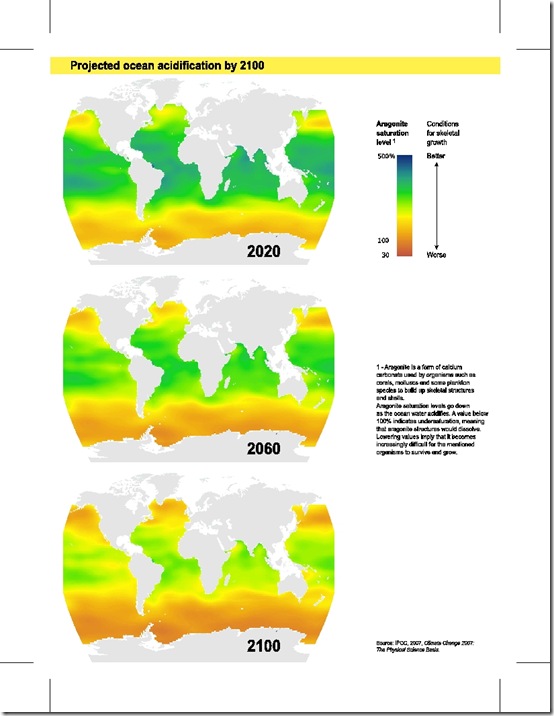Time for some ocean acidification news.
Oysters grown on the West coast of American have been having a hard time. As this story noted in 2009:
In 2005, when most of the millions of Pacific oysters in this tree-lined estuary failed to reproduce, Washington’s shellfish growers largely shrugged it off.
In a region that provides one-sixth of the nation’s oysters – the epicenter of the West Coast’s $111 million oyster industry – everyone knows nature can be fickle.
But then the failure was repeated in 2006, 2007 and 2008. It spread to an Oregon hatchery that supplies baby oysters to shellfish nurseries from Puget Sound to Los Angeles. Eighty percent of that hatchery’s oyster larvae died, too.
Now, as the oyster industry heads into the fifth summer of its most unnerving crisis in decades, scientists are pondering a disturbing theory. They suspect water that rises from deep in the Pacific Ocean – icy seawater that surges into Willapa Bay and gets pumped into seaside hatcheries – may be corrosive enough to kill baby oysters.
Well, now it seems the suspicions of high CO2 having something to do with this may have been confirmed. Someone had the good idea to actually takes measurements of the water used:
Increased pCO2 and decreased pH have been shown to negatively impact larval development in C. gigas (Kurihara, 2007). Periods of elevated pCO2 in May and June 2010 correlated with commercial losses at WCH.
In another study, decreased pH was shown to decrease shell strength of pearl oysters (although it doesn’t appear that they looked at the pearls themselves.)
And for corals, another recent study indicated that a combination of even modest water temperature increase and lower pH has a big effect on coral growth and survival:
Holger babysat 40 of the baby corals for 42 days under four different conditions: In the first tank, the researchers simulated 1C of ocean warming; in the next, they simulated ocean acidification by bubbling carbon dioxide through the tank to lower the pH by 0.25; the third combined this warming and acidification; and a fourth tank maintained current ocean conditions as a control.
“The different conditions had absolutely no effect on the ability of the larva to settle – to stick to the rock surface – which may be good news for people who are trying to grow coral gardens,” Aaron says.
But post-settlement, some of the young coral polyps were showing the effects ‘global warming’.
“The biggest surprise was that neither temperature alone, nor acidification alone had a big effect on the growth or survival rate [95%] of the coral, even though the warming prompted zooxanthallae expulsion as expected,” Aaron says. “Once we combined this moderate warming and acidification, though, we saw significant impacts: growth rate of the polyps – for both the skeletal and soft pulpy mass – plummeted to almost half of the rate seen under the other three conditions, and they were twice as likely to die [90% survival rate].”
The link to the actual study abstact is here.
And finally, if these Europeans have it right, the decrease in aragonite saturation (important for some corals and shellfish) is going to be on a rapid downward spiral this century right around the world:
If you want to read the tiny words, and look in more detail at the original, go here.

No comments:
Post a Comment